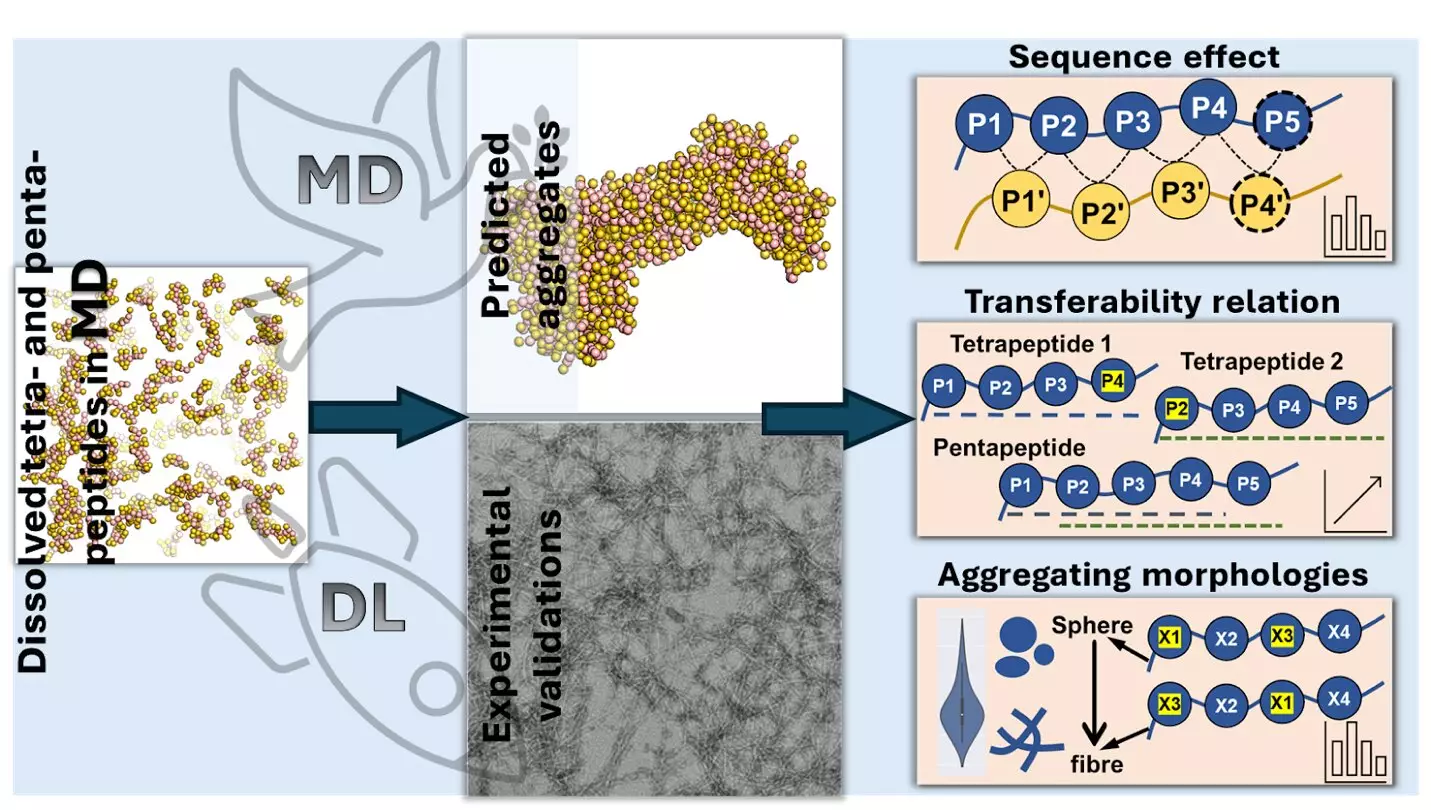Peptides, short chains of amino acids, play a crucial role in various biological processes such as building structures, speeding up chemical reactions, and supporting the immune system. The specific function of a protein is determined by how its amino acids interact with each other and aggregate into a three-dimensional structure. Scientists from China have conducted a study to investigate how short peptide chains aggregate together, utilizing molecular dynamics simulations and advanced AI techniques to predict the aggregation process based on the amino acid sequence.
The study revealed that certain amino acids, particularly aromatic ones like tryptophan, phenylalanine, and tyrosine, enhance aggregation significantly, especially when located towards one end of the peptide chain. It was observed that aromatic amino acids have ring-shaped structures that attract each other through “π-π” interactions, aiding in the clumping process. On the other hand, hydrophilic amino acids such as aspartic acid and glutamic acid inhibit aggregation by strongly interacting with water molecules, preventing the peptides from sticking together.
Changing the amino acid sequence of peptides has a direct impact on aggregation. For example, adding aromatic amino acids to the end of the peptide chain increases aggregation, whereas placing negatively charged amino acids at the beginning reduces it. The types and positions of amino acids also determine the shapes in which peptides clump together. Amino acids with a charge tend to form long, thread-like structures, while those that avoid water create round, ball-like clusters.
Implications for Medicine and Material Science
The findings of this study have significant implications for medicine, material science, and biotechnology. Understanding how peptides aggregate can aid in creating new materials, designing more stable drugs and drug delivery systems, and providing insights into diseases related to peptide aggregation, such as Alzheimer’s disease. The research also holds promise for advancing biotechnology applications like semiconductors, biosensors, and diagnostics, ensuring the accuracy and consistency of these tools.
By incorporating advanced AI techniques like deep learning models into their research, the scientists were able to predict how peptides of different lengths would aggregate based on their amino acid sequences. This integration of AI into scientific discovery not only enhances our understanding of peptide aggregation but also opens up new possibilities for biochemistry, materials science, and computational biology. It represents a step forward in leveraging technology to advance research and innovation in various scientific fields.
Overall, the study on peptide aggregation provides valuable insights into how short proteins interact, fold, and function, offering important guidelines for predicting and managing peptide aggregation. The research is poised to have a significant impact on drug stability, material development, and various biotechnological applications, showcasing the potential of interdisciplinary collaboration and cutting-edge technology in scientific exploration.



Leave a Reply